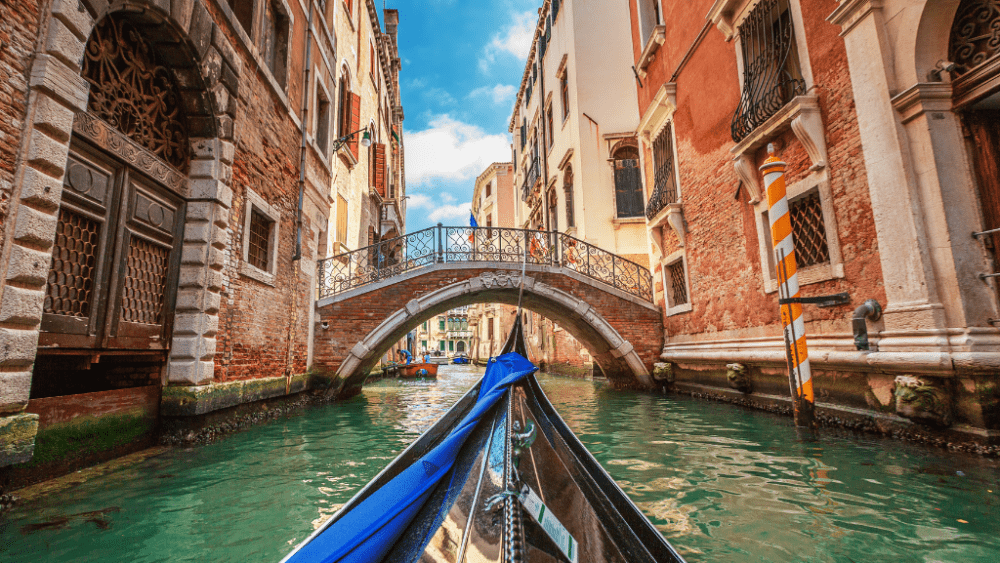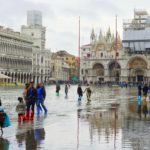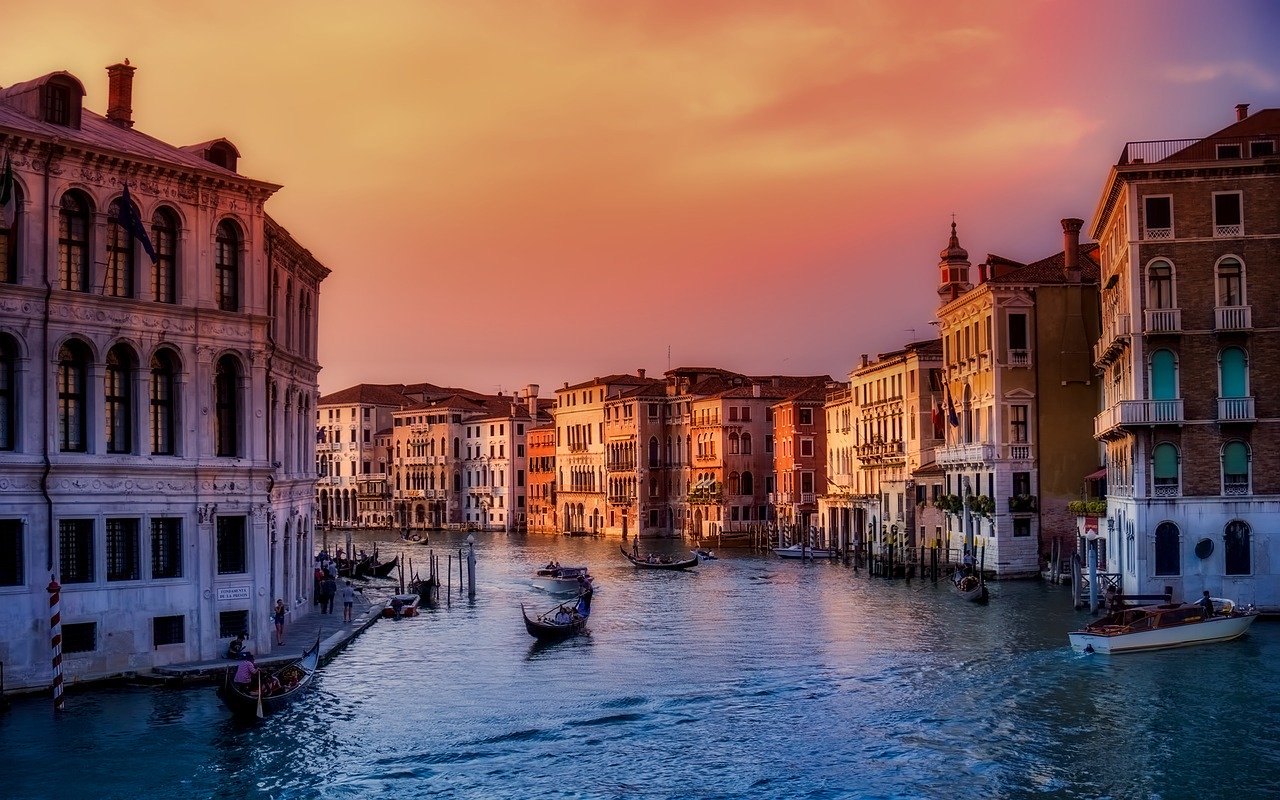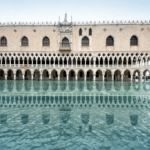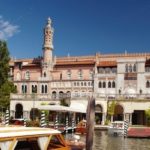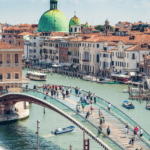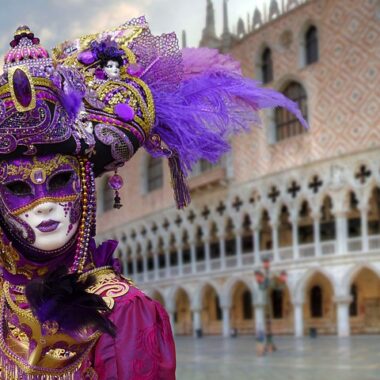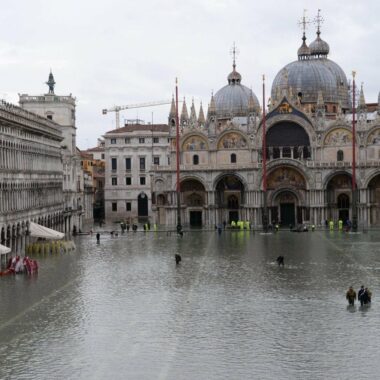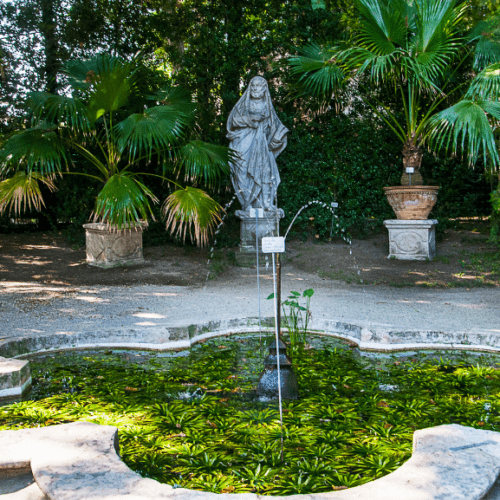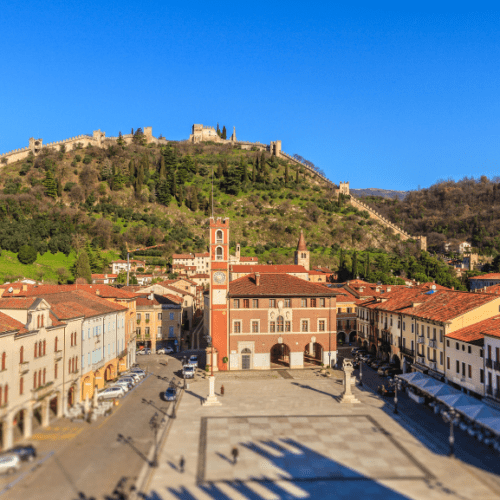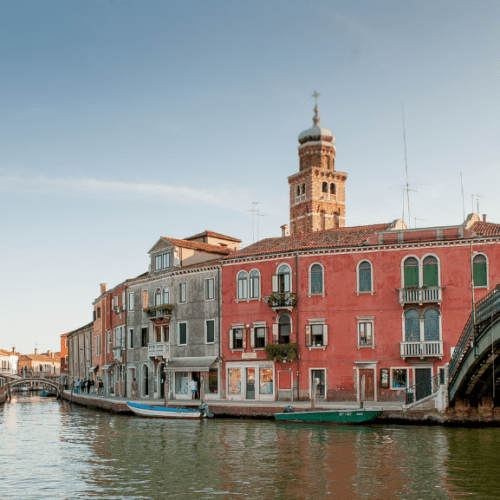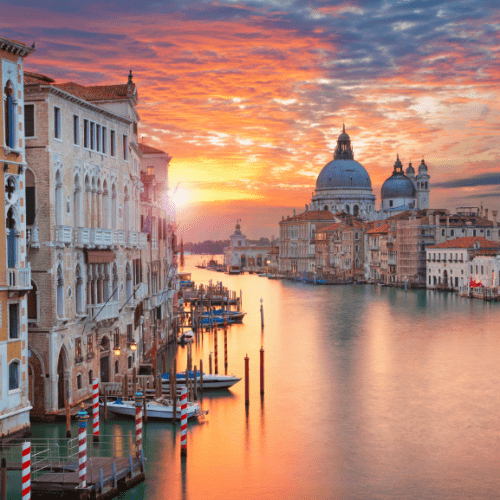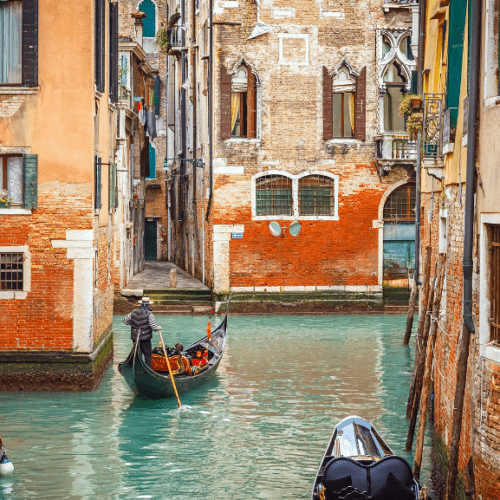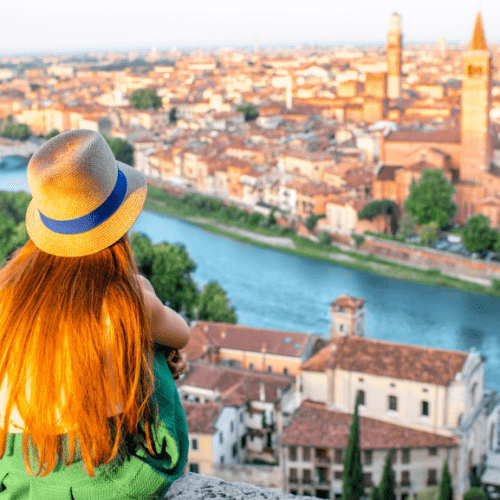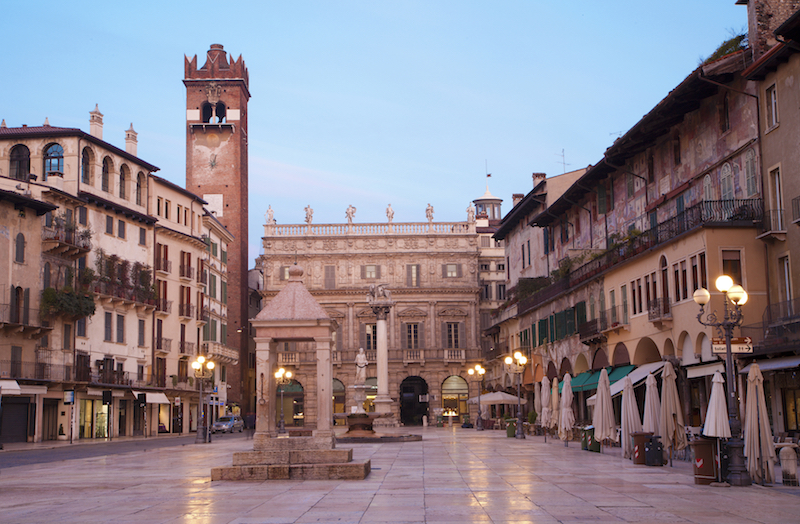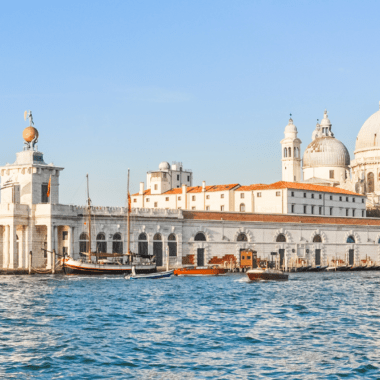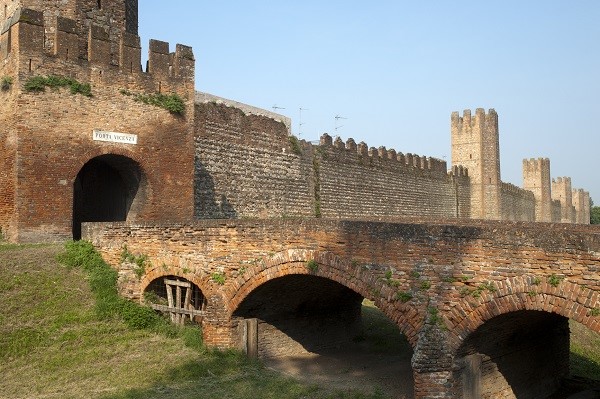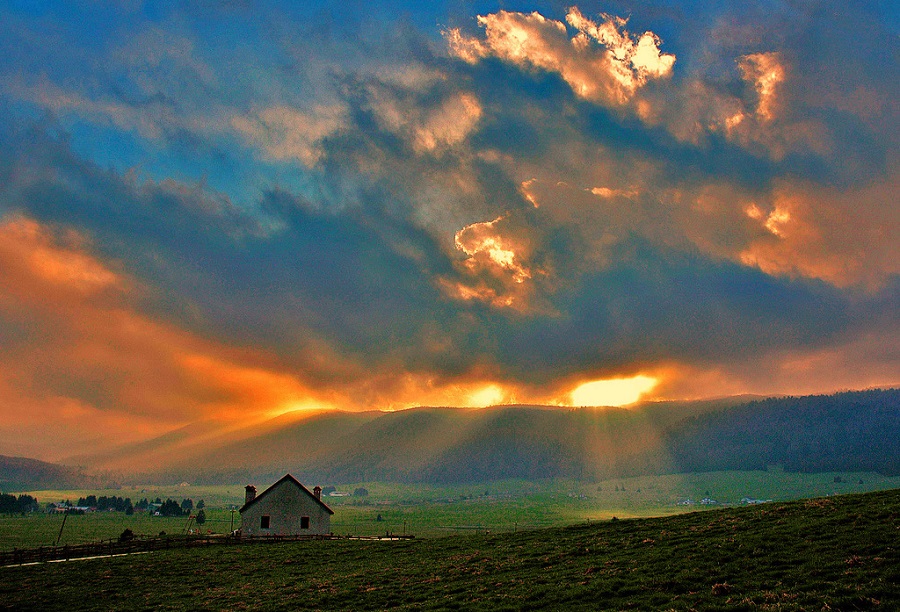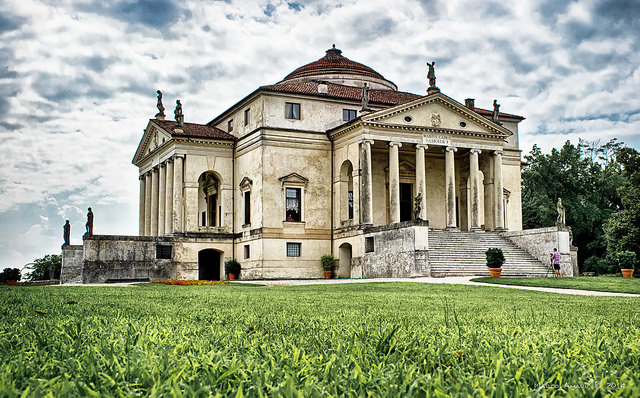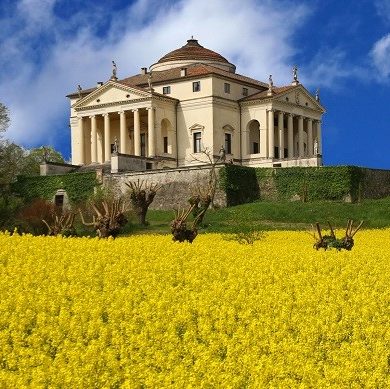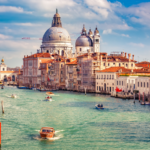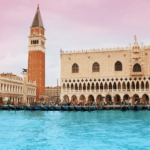In a city full of colors, with flowers cascading from balconies, marble pink pillars, crystal green Venice water, the very icon that epitomizes Venice in the minds of people is black. Gondolas have they always been black? If so, why? And if not, what happened?
Gondolas in Venice, Italy

By all logic, it would seem they should be vividly colorful and that something must have gone terribly awry sometime in the past. Venice was, after all, a city of artists. It was the dream destination for painters and sculptors, moreover, the city reflects arts at every turn. In lush oil paintings, the mosaics of St. Mark’s, elegant bridges, and even in the marble steps leading up from Venice canals into homes and onto walkways.

Gondolas have been a part of Venice for a very long time. The first mention of them is in a letter written by Doge Vitale Falier in 1094. No one knows much about these first gondolas – not even what they looked like. By the fifteenth century we know they slipped through the waterways of Venice carrying both passengers and goods from one area of the city to another, and they became protagonists of paintings by Carpaccio, Canaletto, Bellini, and others. In studying these paintings we can see a familiar shape emerging. The name comes from latin “cuncula” seashell.
But color? What about the color of a Gondola?

In fact, the gondola has not always been black. It shimmered with vivid blues, greens, reds, purples, and gold. The Venetian typical ships were covered in velvets, brocades, and silks, the Felze (the coverings for passengers) also stood out. All of them calling attention to themselves, declaring their owner’s wealth, prestige, and even ambition.
The shape of the gondola was not quite the same as today. It was flatter, wider, moreover, more than one person rowed it. Yet it was gorgeous. Some type of gondola were covered – to protect the identities of those meeting for a tryst. Some others were open to the public.
A jump into the past of gondolas

It’s 1500. Imagine thousands of gondolas plying Venice canals. Gondoliers of enviable skill steer them and carry musicians, lovers, nobles, businessmen, and artists. Imagine the chats of friends and the strains of a violin or the baritone voice of a singer drifting across the water. Imagine laughter bouncing across the tiny waves created by countless oars. And imagine the blinding saturation of colors bouncing off the water. They mirror the city and you head with it into the Renaissance. Then, the gondola was relegated to the shadows.
In 1562 the Doge (chief magistrate) of Venice handed down a decree that from thenceforth only gondola in the service of transporting important personages could be colored. All others had to be black; from that point onward the seemingly simple black gondola, unable to adorn itself with color, began to develop elegance in shape, becoming one of the most beautiful objects of both art and function in the world.
What happened next?
Over the next three centuries, the gondola’s shapeshifted. Starting in the fifteenth and into the sixteenth centuries they became a little slimmer and the Ferro (literally “iron”), the distinctive ornamentation is still present today on the bow, began to emerge. Originally this “Ferri” were the same at both ends of the craft, but soon the one in the stern shrank – in some cases to disappear altogether.
The Ferro on the bow, however, grew larger. Made of iron, it weighed approximately 45 pounds/24.5 kilos and functioned as a counterbalance to the weight of the gondolier standing on the stern. The stern changes as well. Rising up to balance out the growing length of the craft and allowing the gondolier greater visibility. The lengthening and slimming of the body, the raising of the stern, then the bow, and the growth of the ferro on the front, all functioned to decrease the surface area in the water. In addition to that, with the evolution of the forcola, or oarpost, the gondolier gained better control.
What do the symbols of the iron bow represent?

The iron bow has many decorations that enrich the elegant boat of the Venice lagoon. Its ‘S’ shape recalls the Grand Canal. The 6 bars represent the districts of Venice: Cannaregio, Castello, Dorsoduro, San Marco, San Polo and Santa Croce.
The bar located backward symbolizes the Giudecca island, moreover, the arch above the highest tooth of the comb represents the Rialto Bridge. The “leaves” between the 6 bars represent Murano, Burano, and Torcello islands.
Ninetheenth century and gondolas
Finally, in the nineteenth century, the gondola underwent its most vital change. It became less symmetrical. The boat became wider on its left side, measured from the center. This meant it listed to the right slightly, counterbalancing both the gondolier standing on the left side of the boat and the use of the oar on the right. In the twentieth century, this asymmetry reached its present measurement of approximately 24 centimeters and its perfection. To watch one glide through the water is like watching poetry in motion.
The shape of the gondola looks simple, however, centuries of subtle change have created what we see today. It measures 11 m and the weight is 600 kg. Each is made by hand in the “squeri”, out of eight different types of wood. It can take months from start to finish. Each one fits one gondolier – the degree of curvature based on his weight – and each is then painted with at least five coats of enamel.
Black enamel. It seems a shame…

…but if we look closely, that black is bottomless: no layers of color at all, but instead a window into what has been. If we peer into its shimmering depths as the gondola passes without sound through Venice canals and under the bridges of the city, we can see shadows, movement, glimmers of crowded waterways, and glimpses of brilliant gold, green, blue. And from somewhere deep inside that black, we can see the beauty that not only was but is, the ancient city of Venice.
Yesterday and today converge in the blink of an eye, and when we glide through the heart of the city in a gondola painted black, we measure our journey not only in miles but in time. Elegant and lovely, they carry us into the past.
Gondola tours in Venice
Now that you know everything about the history of the gondola, I bet you can’t wait to take a gondola tour in Venice. Maybe during your honeymoon in Venice, you can take an early morning gondola ride or make time for it as a part of your Venice itinerary. If you wonder how much is a gondola ride in Venice, the price is € 80 (about 95$) for 30 minutes during the day and € 100 (about 119$) for 35 minutes in the evening. Not enjoy your holiday in Venice and make the best out of it!
